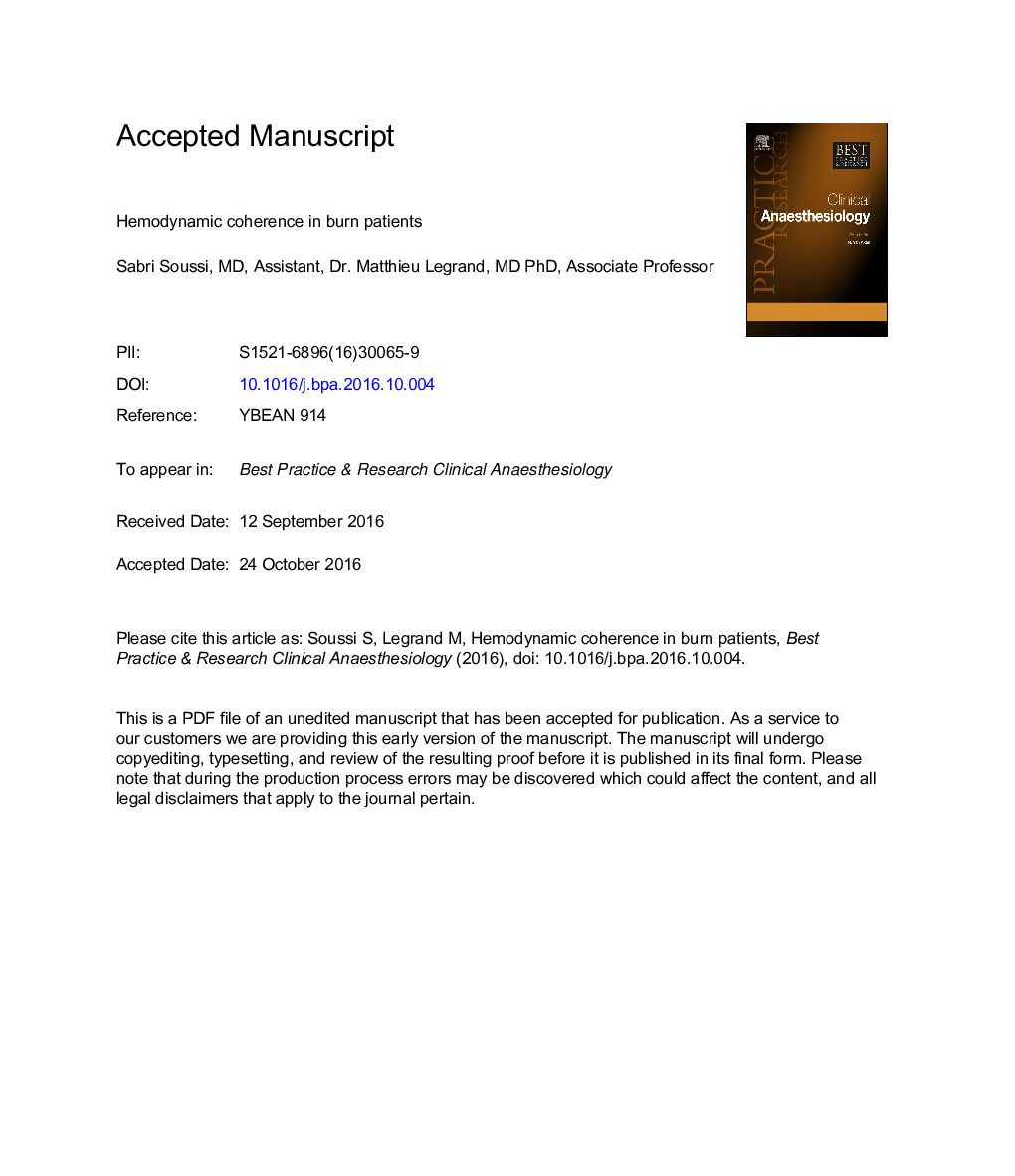| Article ID | Journal | Published Year | Pages | File Type |
|---|---|---|---|---|
| 8610947 | Best Practice & Research Clinical Anaesthesiology | 2016 | 15 Pages |
Abstract
Burn shock is characterized by profound hemodynamic alterations mainly associated with rapid loss of intravascular volume related to severe capillary leak. Thus, fluid resuscitation conventionally based on macrocirculatory targets is considered as a corner stone of initial management of patients with burns. Nonetheless, traditional markers such as blood pressure, urinary output, and cardiac output are helpful but do not sufficiently reflect the adequacy of perfusion and oxygenation at the microcirculatory level. Microcirculatory alterations have been identified in patients with severe burns even when macrocirculatory variables are within therapeutic goals. In this review, we discuss the pathophysiology of the microvascular alterations in burn shock, its coherence with macrocirculatory physiologic variables, and potential future implications for the treatment of burn shock.
Keywords
Related Topics
Health Sciences
Medicine and Dentistry
Anesthesiology and Pain Medicine
Authors
Sabri (Assistant), Matthieu (Associate Professor),
